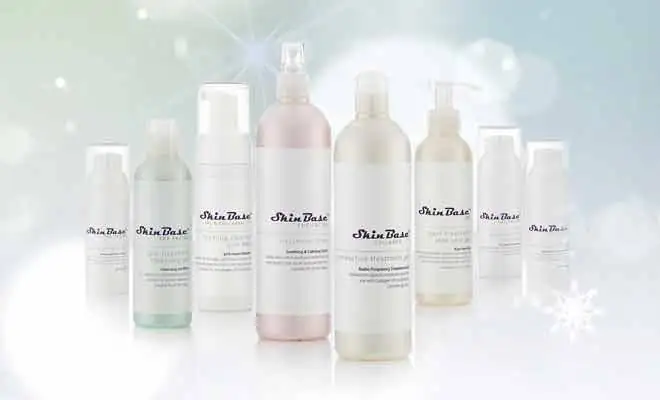Rosacea is a long term, uncomfortable skin condition affecting roughly 1 in 10 individuals. There are 4 main types of rosacea, each with its own set of symptoms, challenges, and potential treatments. Understanding the different types of rosacea is crucial for sufferers so they can effectively manage their symptoms.
What Are The Types Of Rosacea?
The types of rosacea are Erythematotelangiectatic, Rhinophyma, Ocular and Papulopustular. Let’s find out more about the 4 types of rosacea and how they differ from each other.
Erythematotelangiectatic Rosacea
Erythematotelangiectatic Rosacea (ETR) is considered the most common type of rosacea. ETR is characterised by persistent redness and flushing at the centre of the face, and visible blood vessels. On darker skin, the redness may appear as a purple or brown flush, as increased melanin levels mask the redness. Individuals with ETR may experience a frequent sensation of heat on their face. Skin may also appear or feel swollen, sensitive, burning, dry or scaly. This subtype can be managed with proper care and treatment, and avoidance of environmental triggers. However, it is frequently mistaken for a sunburn or skin sensitivity.
Rhinophyma Rosacea
Also known as Phymatous Rosacea, this is a much rarer type, often presenting on the noses of men between 50 and 70 years old. Rhinophyma rosacea is characterised by the thickening of the skin, usually resulting in a large, red, bumpy nose. The thickening less commonly affects the chin, forehead, and ears. Individuals who suffer with Rhinophyma usually have another subtype of rosacea and additional symptoms. Recent research has disproven the proposed connection between rhinophyma sufferers and alcohol use.
Ocular Rosacea
Ocular rosacea, as the name suggests is characterised by symptoms affecting the eyes. For some people, rosacea extends beyond the skin, with symptoms including redness, dryness, grittiness, and light sensitivity. Individuals with ocular rosacea may also find their eyes are burning or itchy, with cysts and broken blood vessels present. Proper diagnosis is crucial for this type of rosacea, as symptoms left untreated can result in diminished vision.
Papulopustular Rosacea
Papulopustular rosacea, also known as acne rosacea, is characterised by red bumps, pimples, and pustules that resemble an acne breakout. Other symptoms also contribute to the confusion between the two conditions, as skin may be oily, red, and sensitive. As well as affecting the centre of the face, as most rosacea symptoms do, papulopustular rosacea may also affect the neck, chest, and back. You can find out more about acne rosacea here.
Rosacea Treatment Approaches
Skincare Routine
Establishing a consistent, gentle skincare routine can help to prevent rosacea flare ups and maintain calm skin. Focus on keeping the skin clean, hydrated and protected with a cleanse, tone, moisturiser and SPF routine. Find out more about skincare for rosacea in our next blog.
Topical Treatments
Topical treatments can be useful for minimising rosacea symptoms. The topical treatment that will benefit your skin the most will depend on the type of rosacea you have, and the symptoms that are present on your skin. Useful ingredients include azelaic acid, hyaluronic acid, niacinamide and aloe vera.
Lifestyle Changes
Identifying and avoiding triggers is key to managing rosacea. Common triggers include spicy foods, hot beverages, alcohol, sunlight, and stress. Keeping a symptoms diary can help individuals to track potential triggers and make informed choices, to minimise flare-ups. Additionally, adopting healthy habits such as practicing stress-reduction techniques, e.g. meditation or yoga, and avoiding alcohol can contribute to overall symptom management.
Oral Medications
A doctor may prescribe oral antibiotics such as doxycycline to treat severe rosacea. These methods work by decreasing the swelling and redness of the skin, for a more even complexion. A doctor may give you oral acne medication for papulopustular rosacea symptoms, to clear up pimples and pustules.
Light Therapy – SkinBase IPL
SkinBase IPL is an excellent choice for treating rosacea. IPL works using pulses of light to target the blood vessels at the surface of the skin. As the light passes through the skin, the vessel absorbs it, turning it into heat energy. The heat energy closes off the vessel from its blood supply, stimulating the body’s healing responses. Over time, the body will absorb the damaged vessel, minimising the appearance of redness and thread veins on the face.

